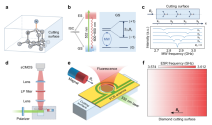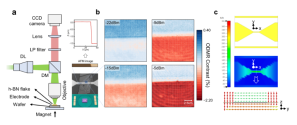China Jiliang University has announced two groundbreaking advances in
quantum sensing, published in
ACS Photonics a top-tier optics journal. Both achievements were led by the university as the primary institution, highlighting China’s growing innovation in quantum precision measurement.
Robust Quantum Spectrum Analysis for FM Microwaves:
Led by Dr. Fei-Fei Zhou (first and corresponding author) with Prof. Xin-Qing Wang as co-corresponding author, the team developed a novel quantum spectrum analyzer using
{111}-oriented industrial-grade diamond. By leveraging precision machining and eliminating complex magnetic field calibration, this method enables ultra-wideband detection with high robustness under strong magnetic fields. The technique successfully achieved real-time
spatial imaging of frequency-modulated (FM) microwave signals, offering a low-cost, practical solution for applications in communication systems, RF chip testing, and electromagnetic compatibility.
 High-Resolution Microwave Field Imaging Using hBN
High-Resolution Microwave Field Imaging Using hBN:
Also led by Dr. Fei-Fei Zhou (first corresponding author), the team collaborated with researchers from Southern University of Science and Technology and Nanyang Technological University. They pioneered the use of
hexagonal boron nitride (hBN) a 2D van der Waals material — embedded with boron vacancy centers to achieve
non-invasive, high-resolution optical imaging of microwave fields in real time. By combining ion implantation and wide-field electron spin resonance imaging, they enabled
in-situ visualization of electromagnetic distributions in microwave devices like antennas and filters.

These breakthroughs open new paths for
quantum-enabled testing, fault diagnosis, and performance optimization in next-generation 5G/6G communication systems and radar technologies. The work underscores China Jiliang University’s rising leadership in quantum sensing innovation.


